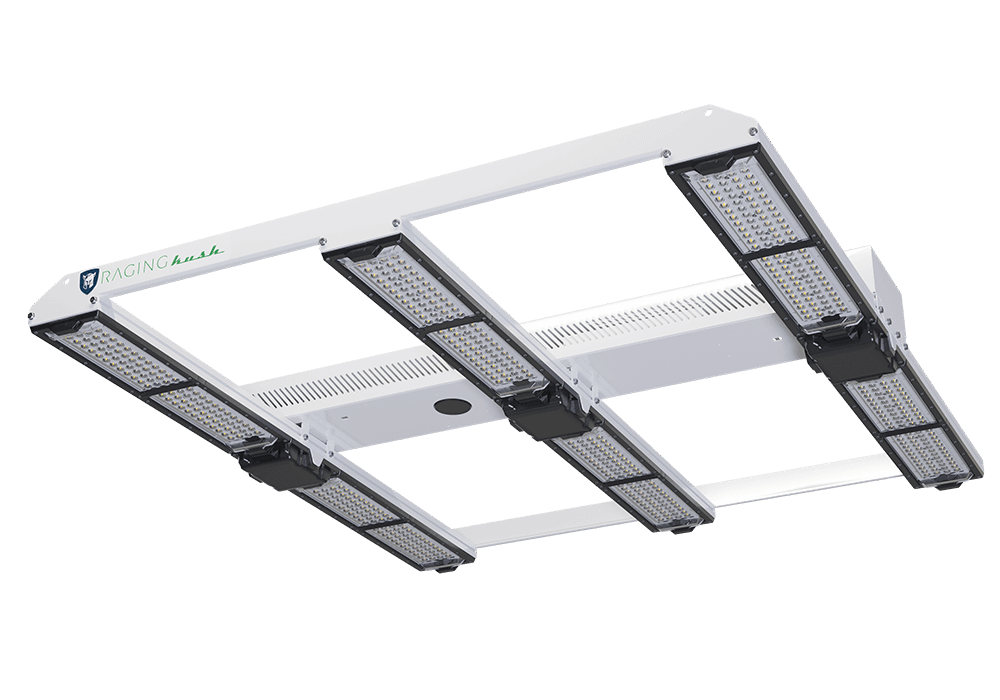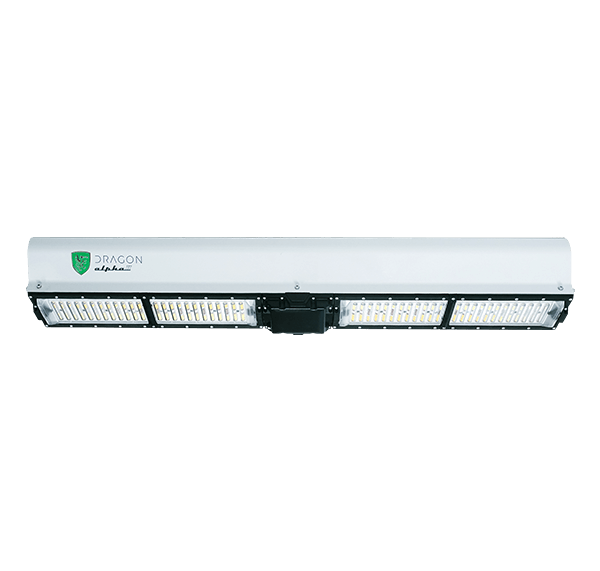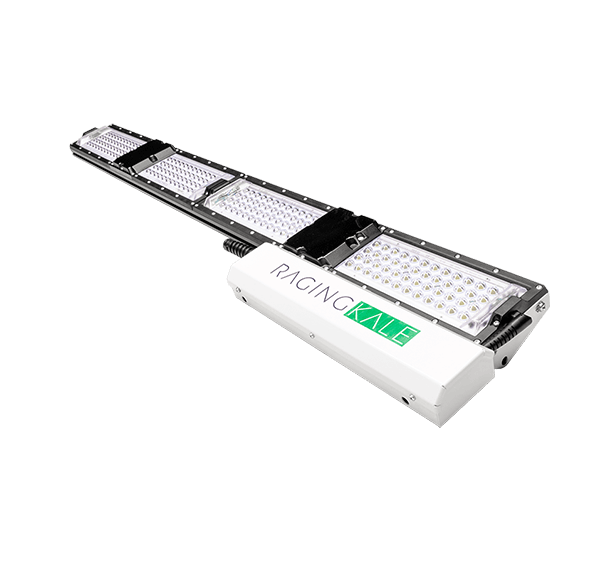Indoor cannabis grow lights facilitate the cultivation of high-quality, high-yield, and consistent harvests. Cannabis is a particularly tricky plant, demanding lots of care and full, direct light. Cultivators can take their harvests to the next level by utilizing state-of-the-art marijuana grow lights.
Understanding cannabis growth requirements and the science behind weed plant lights can enable you to replicate natural light, aid plant photosynthesis, and ultimately lead to a higher quality of cannabis. It will also help you select a high-quality product for your cannabis growing needs rather than wasting your money on cheap, low-quality pot-growing lights.

The difficulty for anyone looking to grow is choosing between the vast variety of indoor grow lights for cannabis. The endless selection can be daunting – cultivators have never had more choices, whether for home or commercial operations.
Why should growers invest in lights to grow indoor weed in the first place?
Why are grow lights so effective at elevating the harvests of cannabis cultivators? On a basic level, cannabis plants are like any other plants in that they require light energy to carry out photosynthesis.
Photosynthesis converts light energy into chemical energy, enabling plants to grow big and strong. With the marijuana plant, in particular, cutting-edge grow lights support flower growth and bud production.
Not all grow lights were created equal. Different cannabis grow lights release different types of light.
For most small, vegetative plants grown indoors, LED lights are recommended as the grow light of choice. Bright, white LED lights cover the red-blue areas of the color spectrum.
These properties increase the chances of obtaining enhanced organic compound expression within cannabis plants.
By using the best LED grow lights for marijuana, growers will discover enhanced properties and exceptional quality in their harvests.

LED lights for growing cannabis are relatively new compared to other indoor plant lights, such as MHs, CFLs, and HPSs. They have exploded in popularity across the cultivation scene due to their superiority in supporting cannabis growth throughout the entire life cycle of the plant.
While LED lights require a bigger initial investment, they have shown themselves to be well worth the investment: more efficient, better for the environment, and more cost-effective.
LED lights have even encouraged some U.S. cities to issue tax breaks to commercial growers who upgrade to these lights.
Plus, high-end LED lights, such as the Scynce LED Raging Kush 2.0, offer a greater level of control. Cultivators can now alter the spectrum of their LED lights based on the growth stage of the cannabis plant.
We highly recommend choosing an LED light with adjustable spectrums so you can customize your grow cycle and ensure you get the most out of every harvest.
Technically, yes. A basic 150-watt LED white light bulb is sufficient for nurturing a small cannabis plant. Just keep in mind that after the plant reaches its flowering stage, its lighting needs to change.
Larger cannabis plants require more light over a wider area for optimal growth. Ordinary LED and other types of light are unsuitable for the latter stages of marijuana plant growth. High-power, purpose-built LED grow lights take energy from different areas of the color spectrum to support photosynthesis.
A significant pain point for growers is adapting to the changing needs of the cannabis plant throughout its various cycles.
New growers may be asking why they need to spend the money on LED lights for weed and can’t simply use a basic desk lamp to save on initial startup costs.
While some plants, such as microgreens, can flourish under a basic desk lamp, cannabis plants are complex and have different needs.
Remember, marijuana grow lights are intended to replicate natural sunlight. Cannabis plants require brighter, more consistent light to take young plants through to maturity.
For this reason, LED lights are necessary to meet the specialized needs of a cannabis plant. A high-end LED grow light for cannabis is designed with every growth stage in mind.
To produce more cannabis buds, light is key. Growers need to be aware of the different wavelengths of light needed by their plants throughout their growth cycles.
Cannabis plants are extremely sensitive to light. Cultivators must constantly adjust the color, intensity, and frequency according to different growth stages. These adjustments replicate the natural conditions the cannabis plant would experience in nature.
Sunlight covers the whole color spectrum, which is why full-spectrum LED lights are needed for optimal growth.
During the seedling/vegetative stage, cultivators prefer blue light. In nature, more blue spectrum light makes it to earth because of the direct path the sun traces across the sky.
The cannabis plant responds to this bright, direct light by growing shorter stems and bigger leaves. LED lights with a high ratio of blue light trigger the natural evolutionary cues within the cannabis plants to grow.
When exposed to blue light during the vegetative stage, the plant will attempt to spread itself as much as possible, thus increasing leaf mass.
Blue light may also be used for the germination and seedling stages.
During the flowering stage, many cultivators switch from blue light to yellow/red light. Throughout the fall season, the sun hangs lower in the sky, which means plants receive light from the red side of the spectrum.
In an evolutionary sense, more red/yellow light tells the plant that summer is at an end, and it must begin preparing for winter.
The cannabis plant responds by growing longer stems and making buds for pollination. For growers, this is the final stage of the process just before harvest.
Studies have shown that plants may move from the vegetative stage to the flowering stage faster when grown under red light.
Experts have known about the effects of red and blue lights on plant growth for many years. Only since the legal status of marijuana has changed in many states has more research been conducted into how other colored lights impact marijuana growth.
Green light, for example, is involved in:
The NASA Biological Sciences research group demonstrated that a combination of red and blue, with 24% green light, enhances growth. On the other hand, too much green light will actually slow down plant growth.
However, cultivators can experiment with different mixes of red, blue, and green light. Different combinations can alter the size of the leaves, the stems, and even the overall color of the leaves.
Depending on the strain and what the grower wants to achieve, it pays off to experiment with different LED marijuana grow lights.

The “Spread” style of LED light consists of smaller LEDs spread over a large area. Some examples of these lights include the Spider, Rack, and Quantum Board.
These are the most energy-efficient LED grow lights for weed on the market today, which can help cultivators to keep their costs down. However, Spider LED grow lights tend to be extremely expensive.
Traditional LED panels contain compact diodes and lamps bearing small to medium wattages. The majority of LED cannabis grow lights tend to be in the panel style.
There’s also an increasing number of hybrid LED panels, with mixes of small and large lamps.
Chip on Board (COB) style LED bulbs are larger and more powerful. These are the brightest, most intense grow lights available. Multiple COB LEDs are positioned over a small area to increase intensity and brightness.
Whether growing for personal use or commercially, cultivators need to know their growing activities are cost-effective.
There are several major factors to consider because LED lights can range from cheap $100 installations to huge, state-of-the-art LEDs costing $2,000 or more.
Here’s what cultivators need to take into account:
Many of these questions will require educated guesses. Either way, every grower is different, and only you can decide on the right grow light for your needs.

So, how much do LED marijuana grow lights cost the grower per day and month?
LED lights are so beneficial because they pay for themselves due to their lower electricity costs. Assuming you invest $1,000 in The Raging Kush 2.0 from Scynce LED to fully optimize your growth, how much would it cost to run?
The Raging Kush 2.0 draws 0.65 kilowatts of power per hour, so how do we convert this into a dollar figure?
If the light operates for 18 hours per day during the vegetative growth stage, this would imply an energy consumption of:
0.65kW x 18 = 11.7kWh (kilowatt hours)
Check your electrical rate for the next stage of this calculation. For this calculation, we will take the U.S. average of 12.83 cents per kWh.
11.7kWh x $0.1283 = $1.50 per day.
Therefore, your monthly costs would be $45 to run the Raging Kush 2.0 for 18 hours per day. As you can see, the environmentally friendly nature of a Scynce LED grow light means your running costs remain low.
Here’s what cultivators need to take into account:
Many of these questions will require educated guesses. Either way, every grower is different, and only you can decide on the right grow light for your needs.
Cannabis plants require different levels of light based on their growth stage. Growers choose to balance light and dark to mimic the natural conditions the cannabis plant would ordinarily experience.
Here are the costs of each stage using the Raging Kush 2.0 LED grow light.
During the first few days of growth, most growers choose to run their LED lights for 18 hours per day, with six days of growth.
The daily cost of the seedling stage would average out at $1.50 per day, as per the calculation above.
Again, most growers will choose to continue running their marijuana grow lights for 18 hours per day, with six hours of darkness.
Other growers prefer to run their lights for a full 24 hours, which would increase the daily running cost to:
0.65kW x 24 = 15.6kWh
15.6kWh x $0.1283 = $2.00 per day
If the marijuana plants are spindly and lacking bulk, consider increasing the intensity of the light.
Technically, growers can run their cannabis grow lights in perpetuity to increase the size of their plants. At some point, however, cultivators will want to switch their LEDs to bloom.
In an indoor environment, the flowering stage necessitates 12 hours of light and 12 hours of complete, uninterrupted darkness.
Running costs during the flowering stage are often lower due to shorter daily running times.
0.65kW x 12 = 7.8kWh
7.8kWh x $0.1283 = $1.00 per day
With a high-quality, fully optimized LED grow light from Scynce LED, you can keep your growing costs down while ensuring a healthy, impressive crop of premium marijuana.
Contact Scynce LED to take advantage of state-of-the-art greenhouse grow lights developed with the science of marijuana cultivation in mind.


123 Main Street
New York, NY 10001
©2025 ScynceLED All Rights Reserved
This site uses functional cookies and external scripts to improve your experience.
Privacy settings
Privacy Settings
This site uses functional cookies and external scripts to improve your experience. Which cookies and scripts are used and how they impact your visit is specified on the left. You may change your settings at any time. Your choices will not impact your visit.
NOTE: These settings will only apply to the browser and device you are currently using.
Cookie consent
We use cookies to track website usage and customize your site experience. Read our Privacy Policy.